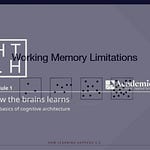For Plato, learning was not an acquisition but a recollection; a remembering of truths the soul has always known which he termed anamnesis. In his dialogue "Meno," Plato demonstrates this through Socrates' interaction with an uneducated slave boy who, without formal instruction, successfully solves a geometric problem through carefully guided questioning.
Where Plato saw learning as a collection of eternal truths re-encountered, Locke saw the mind a blank slate where all knowledge comes through experience and sensation. "Let us then suppose the mind to be, as we say, white paper, void of all characters, without any ideas”.
Of course both of them were wrong, but their ideas would dominate conceptions of learning right up until the relatively recent past. Over the last 100 years, three paradigms of learning have taken root. Richard Mayer* identified the three dominant models:
Learning as Response Strengthening – Rooted in behaviourism, this view sees learning as a process of reinforcing correct responses. While useful for habit formation, it oversimplifies the complexity of understanding and application.
Learning as Information Acquisition – This metaphor, inspired by cognitive psychology, frames learning as the transfer of information into the brain. However, merely exposing students to information does not guarantee retention or understanding.
Learning as Knowledge Construction – In this view, learners actively organise and integrate new knowledge with prior knowledge, making learning a dynamic process rather than a passive one.
Evolutionary psychology adds another dimension, suggesting that certain learning capacities represent adaptations shaped by natural selection. Our propensity for language acquisition, face recognition, and threat detection reflect specialised learning mechanisms that evolved to solve recurring problems in our ancestral environment.
For me, one of the most helpful ways of thinking about the brain in terms of instructional design is as a kind of limited resource system and the idea there are very real constraints based upon what we can attend to, process and encode information and unless we pay close attention to these constraints, then the way in which we design teaching and learning might be less than effective.
But learning is also about a particular kind of focus. “Learning is a matter of intensity, not elapsed time” said Robert Heinlein and this is certainly true in terms of what neuroscientists call "salience"; the quality that makes some stimuli stand out from others. Emotionally charged, personally relevant, or deeply engaging learning experiences receive preferential processing in the brain, creating memory traces resistant to decay. Everyone says they remember where they were when 9/11 happened but these are not good mechanisms for learning how to drive or solve quadratic equations.
Paul defined learning as a change in long term memory and I think it’s my favourite definition because it’s the one that helped me most as a teacher when I heard it first. It may not have Platonic mysticism or Lockean optimism, but it’s the most honest, and it affords a particular kind of hope for teachers and parents because we can do something about it. As the poet John Burnside puts it “ but still, through everything, attentive to the irredeemable.”
*Mayer, R. E. (2010). Applying the Science of Learning. Pearson.




